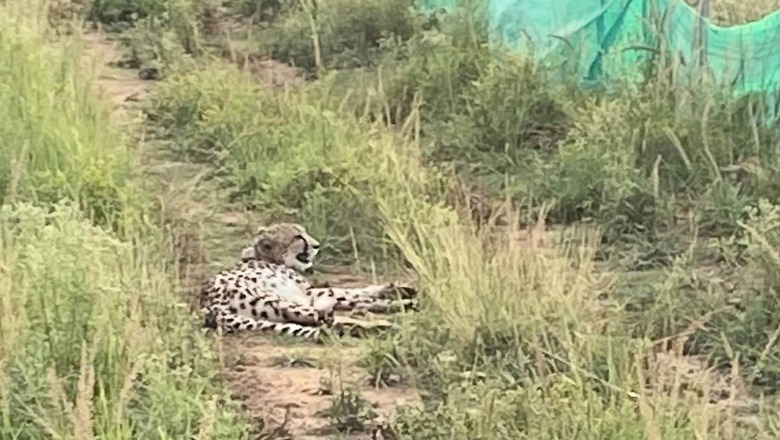
views
Scientists from Wildlife Institute of India (WII) may now conduct a fragmentation analysis of the cheetah habitat at the Kuno National Park in Madhya Pradesh. The recommendation was made in the first meeting of the Cheetah Project Steering Committee held in Kuno on Wednesday.
The committee of senior wildlife experts was formed last week to advise National Tiger Conservation Authority (NTCA) and MP Forest department on further course of cheetah introduction.
As more big cats get released into the wild, their likely interface with local communities has become a point of consideration. “Cheetahs are free-ranging animals.
Eventually, all of them would have to be released into the wild. So, it’s important that we have a clear idea of which areas might see Cheetah intrusion, and prepare accordingly,” Rajesh Gopal, chairman of the committee tells News18. “Such an assessment usually does not take a long time.”
Spread over a 738 sq km area, the Kuno National Park has many villages in its vicinity. The fragmentation analysis would be conducted using GIS to get an estimate of the vulnerability of human-cheetah interface in the area. It is to be noted that for the first time in almost 70 years, cheetahs now inhabit the Indian forests, and their release into the wild is also fraught with risks.
The sudden death of six cheetahs in just two months has given a major jolt to Project Cheetah – government’s mega-wildlife experiment to re-introduce an extinct species in the Indian ecosystem. The officials now seem to be treading cautiously to ensure the survival of the rest of the big cats.
Experts say this will also help them prepare the adequate workforce, including rapid response teams that would be required to fix the weak links in the landscape.
“There are a lot of vacant posts in the department. We have been pressing upon the need to fill these posts to resolve the staff crunch on the ground. But the problem is that these vacancies are state-wide, so it may take time,” says JS Chauhan, Principal Chief Conservator of Forests, Bhopal.
GREEN SIGNAL TO RELEASE MORE BIG CATS
So far, the forest department has released around six big cats into the wild — two male coalitions, and two individual females. One of the male cats, Elton was brought back to Kuno after his adventurous strides to the far-end of the district.
The committee has also given a green signal to the release of more cheetahs into the forests. At least 2-3 more are likely to join them in the coming days before the monsoon hits the region. However, the forest officials have been advised not to rush through as the weather is still hot in Kuno, but insisted that the release must happen before the rains.
PROJECT ON TRACK
The wildlife experts who visited Kuno for the first time after the sudden death of three cubs last week also seemed to suggest that “all is well” at the national park, and that the government’s long-term wildlife project is “on track.”
“There is no cause of anxiety. The animals are doing fine within the enclosures. We also spotted two female cheetahs, and they have been making their kill. The two-month old lone cub is now recovering fast. But all these animals will have to go out – that is the purpose,” adds Dr Gopal.
The experts also emphasised on the need to involve the communities in the conservation exercise and devise a strategy for capacity-building. “Gains for biodiversity must be accompanied with well-being of the ecosystem and the local people,” they highlighted.
Out of the total 20 adult cheetahs brought from South Africa and Namibia, only 17 adults now remain at Kuno, along with a lone surviving cub.




















Comments
0 comment